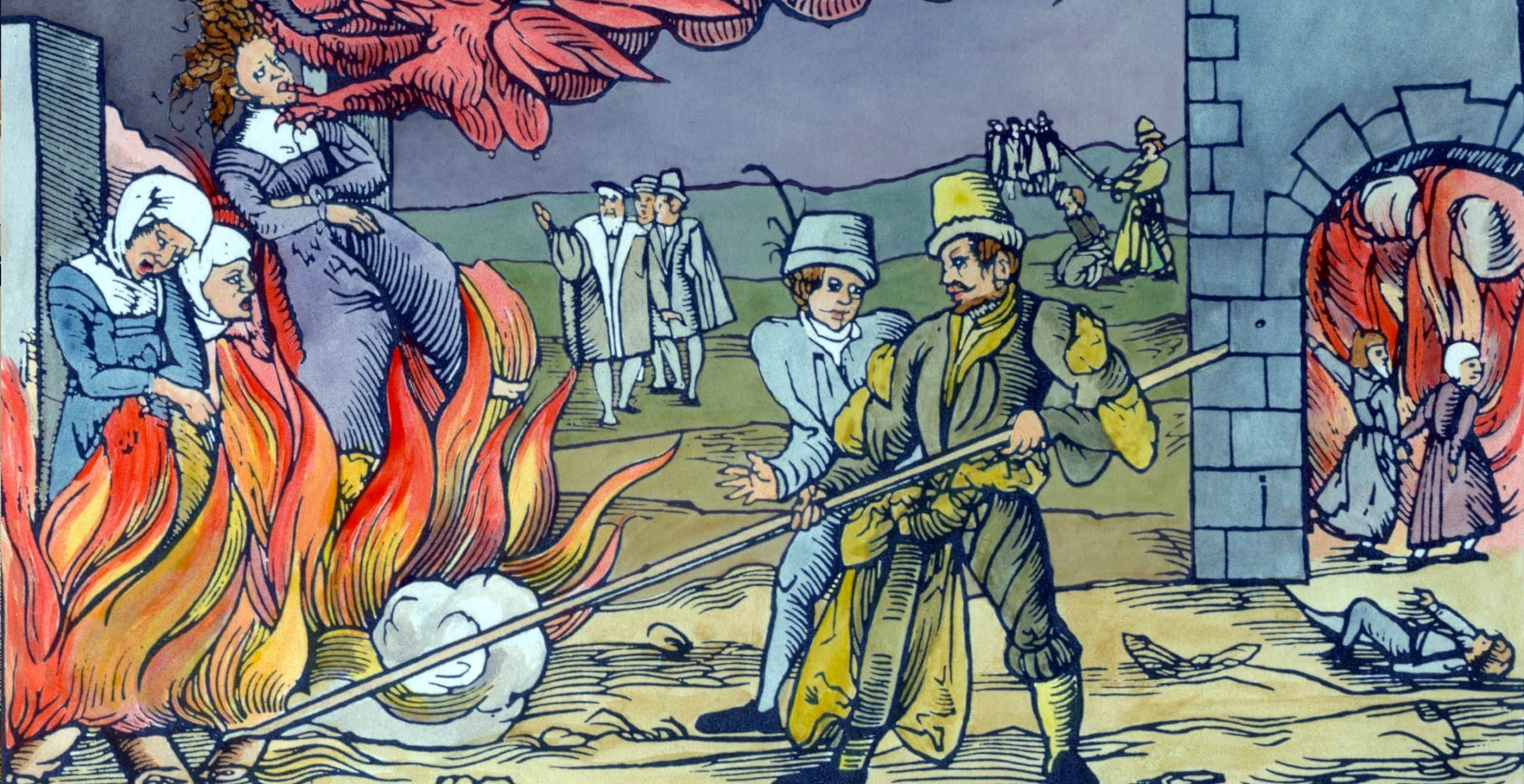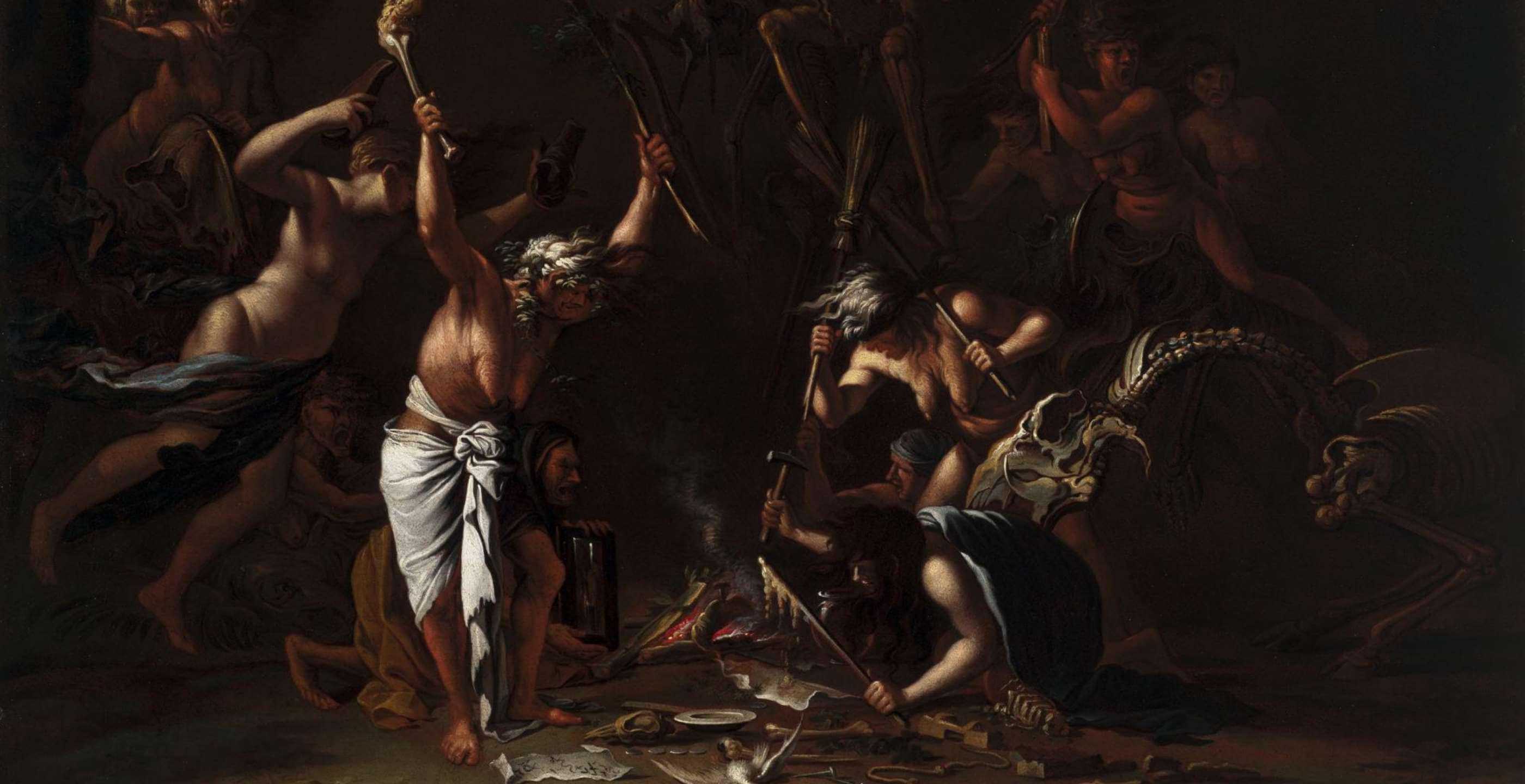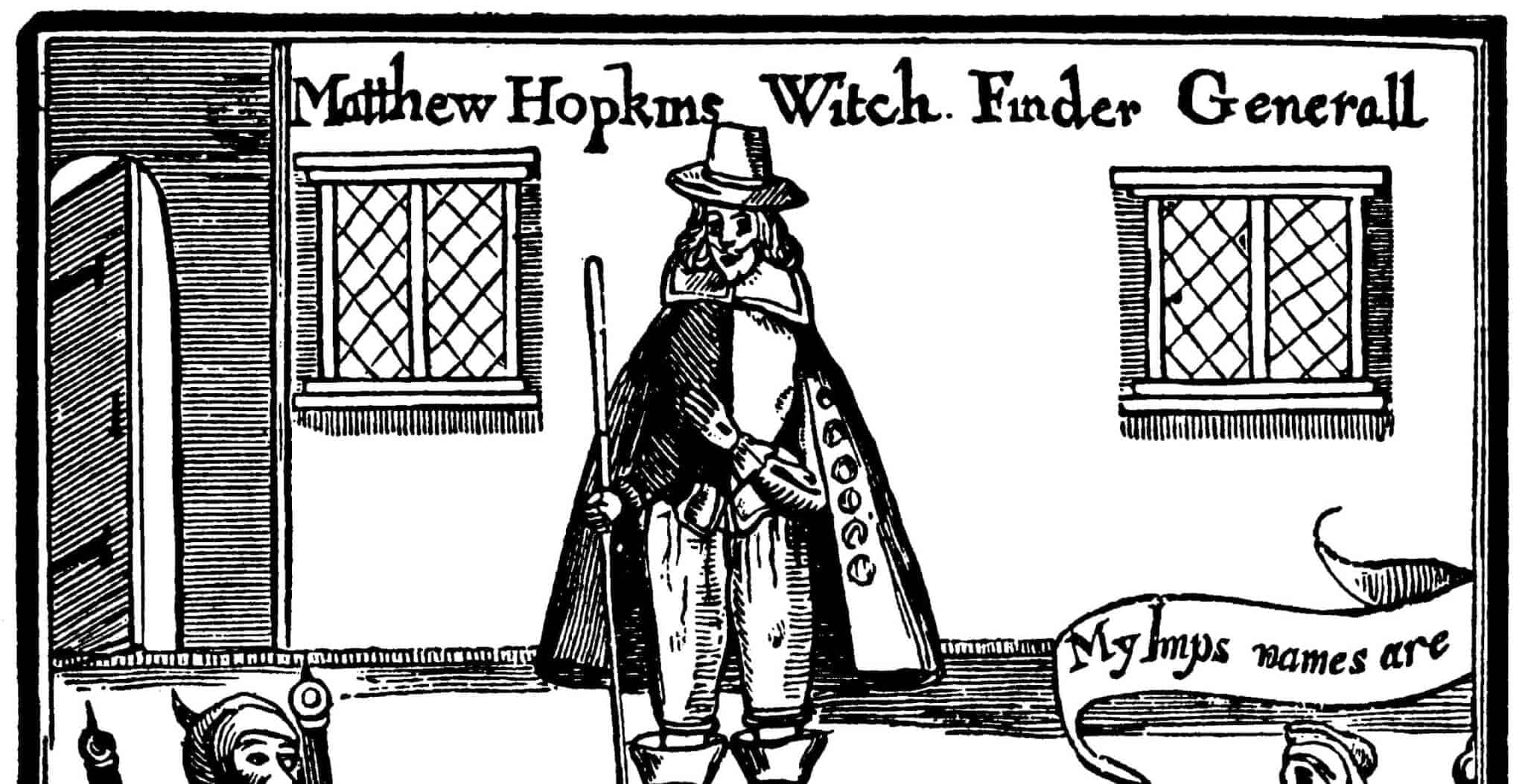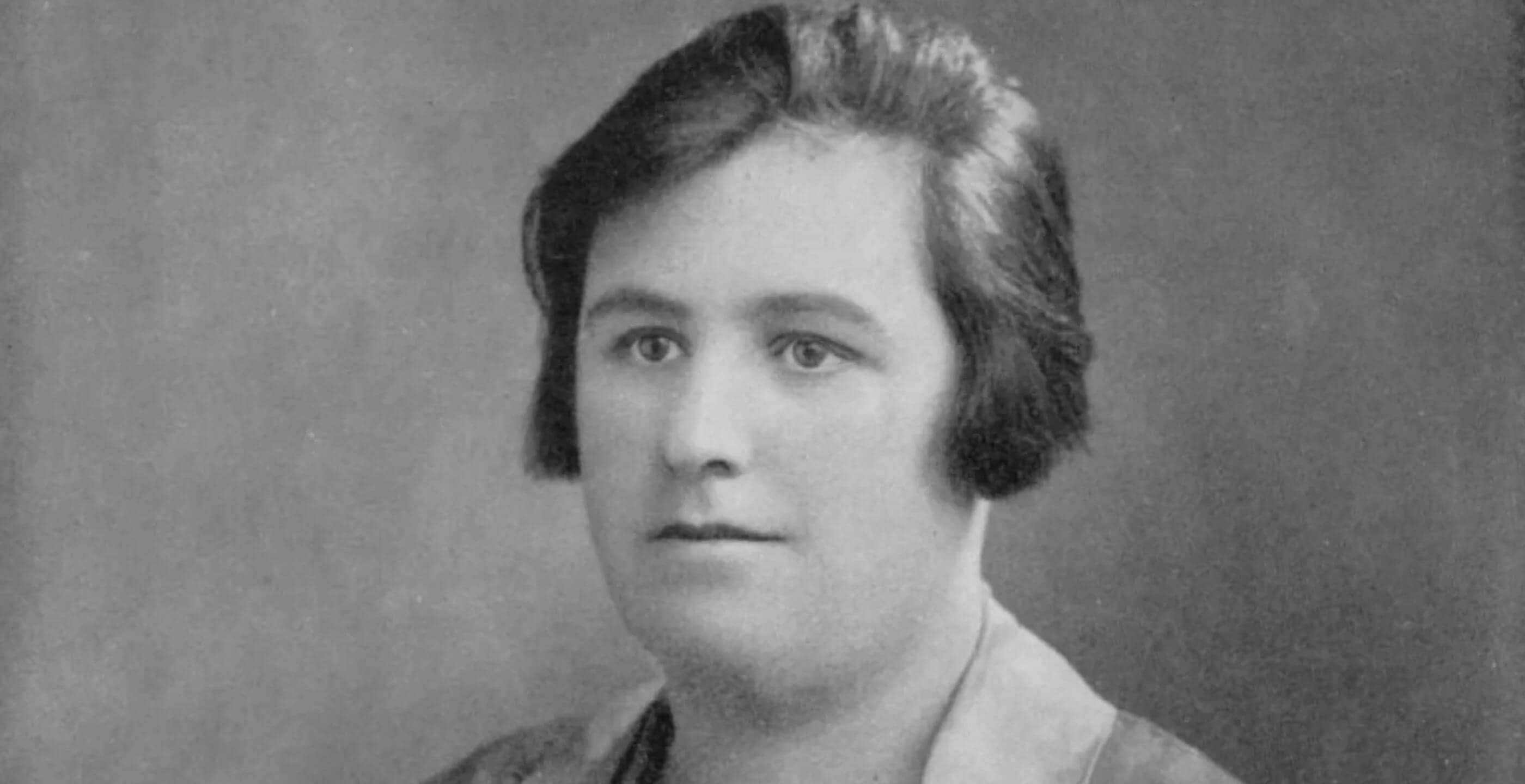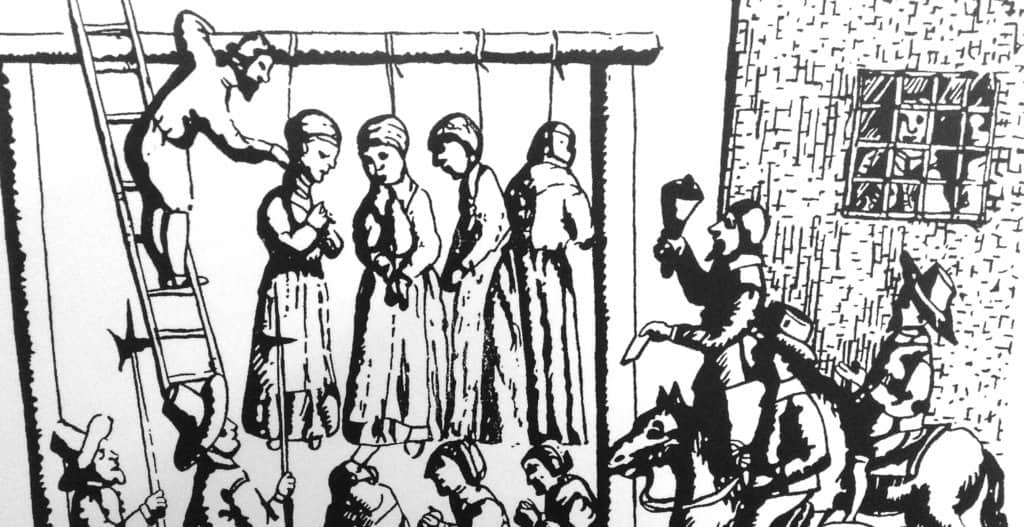Aristotle is not a name you would expect to hear in regard to the witch hunts that took hold of Europe between 1450-1750, especially as he himself was also a victim of religious intolerance (or rather lack thereof, as Aristotle fled Athens to avoid being executed under charges of impiety). However, whilst Aristotle himself did not believe in witchcraft, his followers did.
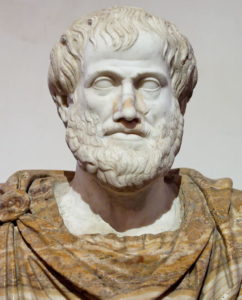
One follower in particular, Thomas Aquinas (1225-1275) had a profound impact upon the Church’s view of witchcraft. Previously, witchcraft had been seen as a pagan belief, and Christians did not believe in it for the most part of the medieval period. So much so that Charlemagne banned executions where a person had been accused of witchcraft, instead stating that those who would murder supposed ‘witches’ would receive the death penalty.
However in Aquinas’ time, two types of magic were believed to exist: harmful magic, which was punishable by death, and spiritual apostasy which was legal. Spiritual apostasy was the belief that witches had no malevolent powers but ‘rather had succumbed to illusions of diabolical agency’. Aquinas managed to bring these two ideas together to create a new idea that witchcraft was blasphemy, thus giving a reason to execute witches as this made their powers evil-minded. This new belief continued well into the Enlightenment as it became part of English law.
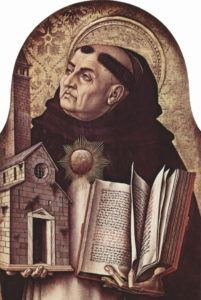
It wasn’t just Aristotle’s logic that made it possible to accuse people of witchcraft, it was also his attitude towards women. Aristotle believed that the menstrual cycle was a sign of women’s inherent inferiority to men and Aquinas reinforced this Aristotelian belief of male superiority, as Aquinas stated that the soul is passed through the father’s semen. Demonology was rooted in Aristotle and Aquinas’ works, which ultimately led to the myth that women’s bodies were a source of pollution and that menstruating women should be left alone. This was because menstrual blood was supposedly toxic and linked to ‘uncanny powers that could ultimately destroy’. This myth managed to persist until the early 20th century in Europe and the female anatomy became inherently tied to conversations surrounding witchcraft, especially in regards to sexuality.
Aristotle and Aquinas’ ideas led to arguably one of the most misogynistic pieces of work ever written, the ‘Malleus Maleficarum’, also known as The Hammer of Witches, by Heinrich Kramer. To say that Kramer had a problem with women is an understatement. The title of Kramer’s work refers specifically to women, as in Latin Maleficarum is in the feminine gender, thus the title actually means ‘The Hammer of the Female Witches’ . Kramer directly cites Aquinas and his defense for the theory of incubi and succubae, as Kramer believes witches to have been born from these sex demons. His book was the result of a feud between him and Helena Scheuberin, as she would curse him in the street and encourage others to not attend his sermons as she believed him to be evil. In response, Kramer accused her of witchcraft and in court, the bishop noted that Kramer focused very much on Scheuberin’s sexuality.
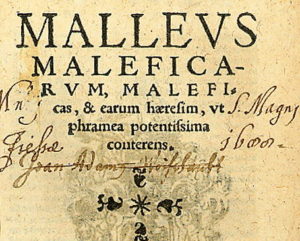
The ‘Malleus Maleficarum’ was used by many European governments as the basis for the mass murder of supposed ‘witches’ during the Enlightenment era, which saw more witchcraft related deaths than the Medieval period. In Scotland, approximately 3,000-4,000 witches were executed between 1560-1707 and during the two-year period of England’s Long Parliament, approximately 200 people were executed for witchcraft.
James I was highly interested in witchcraft and even wrote his own book on witchcraft called ‘Daemonologie’. He saw himself as somewhat of an expert on the subject and became involved in the 1605 case of Anne Gunther as well as the 1590 North Berwick witch hunt. The Anne Gunther case was settled in the Star Chamber, an English court in the Palace of Westminster, which found that Anne’s possession was fabricated by Anne’s father. However, in the North Berwick witch hunt, James I viewed himself to be a victim as those accused in the trials were not just accused of witchcraft but also of high treason. The North Berwick witch hunt did not just involve James I but also the state of Denmark, as the case involved James’ wife Anne of Denmark and two Danish women were executed in Kronberg for cursing Anne’s ship. This witch hunt implicated over seventy people and several were executed, the most famous being Agnes Simpson.
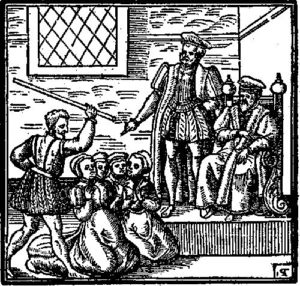 Suspected witches kneeling before King James VI, from ‘Daemonologie’
Suspected witches kneeling before King James VI, from ‘Daemonologie’
‘Daemonologie’ is a philosophical work involving two characters, Epistemon and Philomathes. Epistemon is epistemology which is a branch of philosophy concerned with the theory of knowledge to which Aristotle contributed. The maxim ‘against one who denies the principles, there can be no debate’ was used by James I in ‘Daemonologie’ and medieval scholastic philosophy used this maxim to refer to the authority of the Aristotelian system. This maxim was the opening sentence in ‘Daemonologie’ and was used to prove the existence of witches, as the Scriptures had stated their existence and this was further proved through confession and daily experience. In 1604, James I issued a statute against witchcraft which transferred the trials from the Church to the common law courts.
Eventually, Parliament passed an act in 1736 repealing the laws against witchcraft, instead choosing to administer fines instead of the death penalty on people who claimed to have magical abilities. In England, the last woman to be executed for witchcraft was Alice Molland in 1684 and in Scotland, it was Janet Horne in 1722.
Claudia Elphick is a History, Literature and Culture undergraduate student at the University of Brighton.
